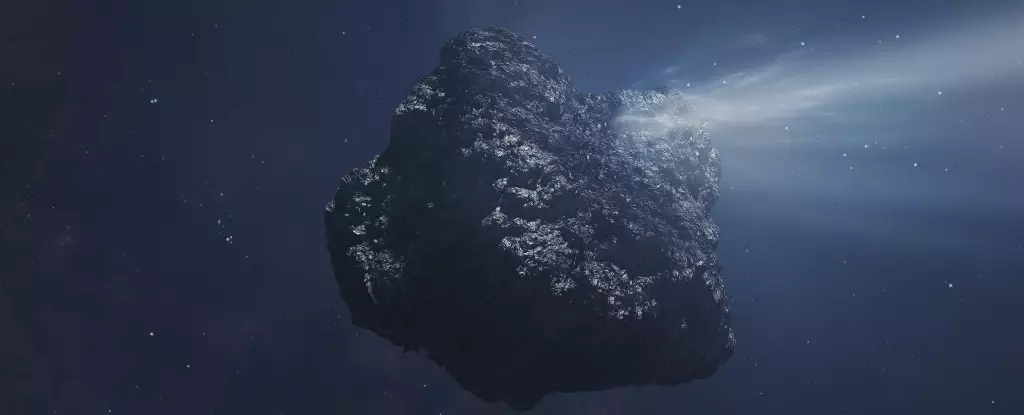Astronomy has long been a field of wonder and intrigue, a discipline where the smallest flickers can turn into monumental tales of cosmic significance. However, the recent discovery of Comet C/2014 UN271, known as Bernardinelli-Bernstein, propels this narrative into a realm of sheer magnitude that is almost bewildering. Spanning a staggering 137 kilometers (85 miles) in diameter, this comet is not just any celestial body; it stands as the largest ever identified within the vast embrace of the Oort Cloud. To put this into perspective, consider that this colossal icy traveler is nearly 14 times larger than the asteroid that led to the catastrophic demise of the dinosaurs. Such grandeur is impossible to ignore and naturally raises a multitude of questions: What does it mean for our understanding of cometary bodies? And how does its immense size alter our perception of potential cosmic threats?
A Flight Path of Intrigue
As physicists and celestial cartographers keep a watchful eye on Comet C/2014 UN271, it is somewhat unsettling that a massive object of this scale is making its way toward the inner solar system. While some might breathe a sigh of relief at the knowledge that it won’t approach anything closer than Saturn’s orbit during its nearest flyby on January 29, 2031, the sheer possibility of having such a substantial body in the vicinity should give us pause. Instead of being passive observers of this cosmic ballet, we should view it as a clarion call to reevaluate our understanding of the universe around us. On one hand, we could regard this comet as a rare opportunity for scientific exploration; on the other, it serves as a stark reminder of the vulnerabilities we face in our cosmic environment.
Investigating the Giants
Recent observations made using sophisticated tools like the Atacama Large Millimeter/submillimeter Array (ALMA) in Chile reveal such striking activity on Comet C/2014 UN271 that they spark a deep-seated curiosity about its life cycle. The detection of carbon monoxide outbursts serves as an announcement—both exciting and eerie—that we are peering into the very workings of another world. This is not merely a massive chunk of ice; it’s a living realm undergoing dynamic changes as it journeys through the solar system. As astrochemist Nathan Roth aptly puts it, these outbursts raise new questions about the surprising complexity of cometary behavior. In scientific exploration, it’s this intersection of discovery and intrigue that makes the stars beyond so rewarding, yet poignantly complex to engage with.
Cometary Paradox: Beauty Meets Risk
Within this vast tapestry, we are reminded of an inherent paradox: The sheer beauty of the cosmic phenomena can often cloak the very real risks they pose. Comet C/2014 UN271 may not be headed for an Earth collision, but its existence in the celestial narrative prompts us to question how prepared we really are for the unexpected. While we revel in the visual grandeur that such comets can offer through powerful telescopes, we must simultaneously grapple with the unpredictability of the universe itself. Are we as a society equipped to handle the multifaceted challenges that such cosmic entities could present? Or will we continue to be mere spectators who only react to danger rather than engage proactively with opportunities for both knowledge and safety?
A Cosmic Calling for Responsibility
In our pursuit of knowledge, particularly in understanding ancient objects from the Oort Cloud, we must also cultivate a sense of responsibility. The exploration of Comet C/2014 UN271 ought to serve as a catalyst for invigorated discussions on planetary defense mechanisms and what they might entail for humanity’s future. Are we doing enough to protect our planet from hidden dangers lurking in the abyss of space? It is not merely about marveling at what lies beyond; it is about being informed, prepared, and active stewards of our planetary existence.
The arrival of Comet C/2014 UN271 offers us a mesmerizing glimpse into the universe’s complex tapestry, urging us towards dual pursuits: the exhilaration of discovery and the greater responsibility of safeguarding our world from potential threats.

